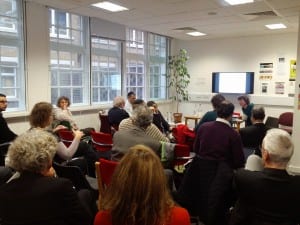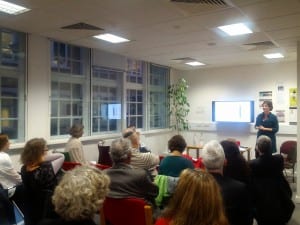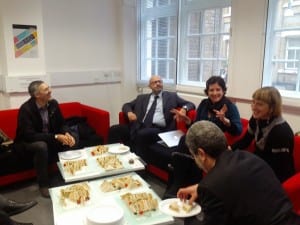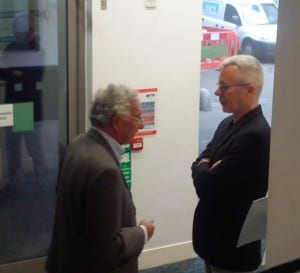Images, diagrams, and tables in Antiquity and the Middle Ages
By uclhvid, on 27 November 2014
On 12th and 13th November 2014 the ERC Calendars project team ran our 3rd workshop ‘Images, diagrams, and tables in Antiquity and the Middle Ages’ (for our previous workshops see here).
The main idea of this workshop was to look at the use of visual devices in medieval and ancient primary sources. The programme covered a wide range of subjects, from astronomical tables in Greek papyri (Alexander Jones, New York, NYU) to the role of images as structural markers in medieval Hebrew manuscripts (Malachi Beit-Arié, Jerusalem, HUJ).
In the core area of calendars talks explored the presence, absence and layout of calendar tables in sources from different cultural areas (Sacha Stern, Nadia Vidro, UCL), the interaction between visual elements and the main prose text (Israel Sandman, Ilana Wartenberg, François de Blois, UCL), and the use of diagrams as mnemonic props for calendar reckoning (Philipp Nothaft, Warburg Institute). The programme was enhanced by presentations on diagrams in music and magic (Alexandre Cerveux, Paris-Sorbonne & EPHE and Sophie Page, UCL), on the depiction of time and space in early medieval maps (Alessandro Scafi, Warburg Institute) and on micrography (Rahel Fronda, UCL). Our discussions have greatly benefitted from illuminating comments of experts on manuscripts: Malachi Beit-Arié (Jerusalem, HUJ) and Judith Olszowy-Schlanger (Paris-Sorbonne & EPHE).
One of the themes that recurred throughout the workshop were factors behind the layout of astronomical and calendrical information. Was it determined by the purpose and the cultural context of ancient and medieval calendars? By local scribal traditions? By the material culture, such as costs and book formats? Or, perhaps, by the nature of reading, since tables are only practical for visual reading but not for reading out? Another point highlighted in many presentations was that tables and diagrams are the most vulnerable part of a text, and scribes felt free to improve, replace or leave them out completely even when copying famous established treatises. Such improvements are useful indicators of a scribe’s level of (mis-)understanding of the text that he was copying.
The flexible format of our workshops allows ample time for discussion, during sessions and over coffee and sandwiches at break times. This time as ever it was the buzz of conversations between international experts in a variety of disciplines that made the workshop particularly enriching.
Our next workshop on ‘Calendar and religion’ is planned for 18 February 2015. Details are soon to follow here.
 Close
Close



